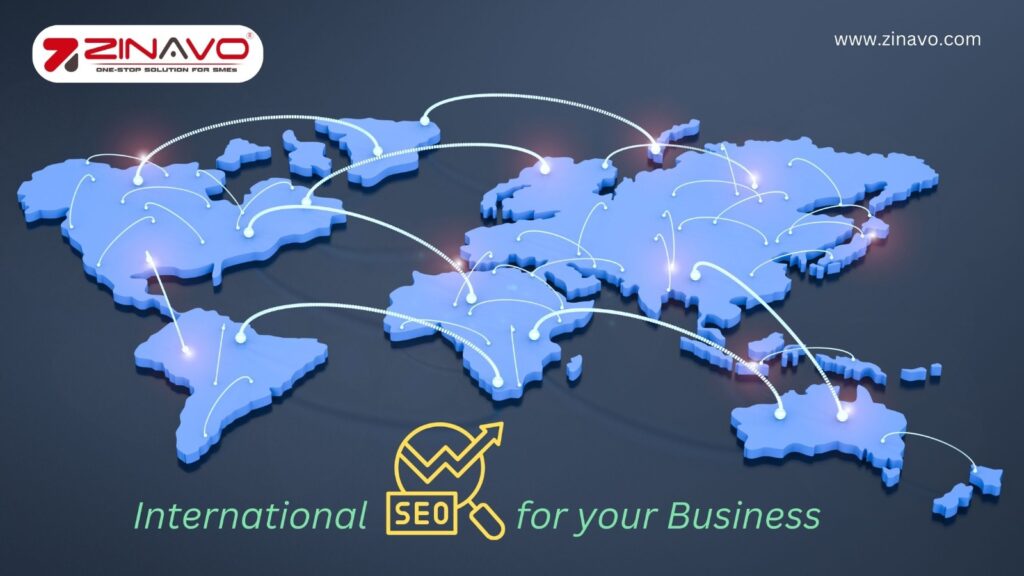Introduction
International SEO is a specialized form of search engine optimization (SEO) that helps companies target and rank in multiple countries. International SEO is key for expanding reach, connecting with diverse audiences, and achieving sustained success in the dynamic digital world.
International SEO is the strategic process of optimizing your website or blog to signal search engines about the specific countries targeted or the languages intended for business. It can be parallel to geolocation-based SEO, where the focus shifts from local areas to a broader global scale. Unlike optimizing for a specific city or region, international SEO involves tailoring your online presence for diverse countries and languages. International SEO is more familiar than it may seem, emphasizing the importance of reaching and connecting with diverse global audiences.
Now, you need to configure your website or blog for universal reach. International SEO plays a pivotal role in not just signalling search engines about your languages and regions but also in configuring your site effectively. This configuration ensures proper communication with search engines, enabling your online presence to extend to desired countries via the Internet.
Why is it necessary to go international SEO?
International SEO is an important aspect of digital marketing for businesses looking to expand their online presence and tap into global markets. By implementing an effective international SEO strategy, businesses can broaden their market reach, increase revenue, expose themselves to new opportunities, compete with big brands, and provide growth opportunities.
It involves understanding unique audience preferences, cultural insights, and buying habits to effectively target foreign markets and maximize business potential. By implementing a well-executed international SEO strategy, businesses can gain customer trust, build brand reputation, and explore new business opportunities in foreign markets.
The Fundamental aspects of International SEO
Global Audience Reach: International SEO broadens your online presence, allowing you to connect with audiences beyond your domestic market.
Increased Opportunities: Targeting international markets opens up new business opportunities, tapping into diverse consumer bases and untapped markets.
Competitive Edge: Staying confined to a local market may limit growth. International SEO helps you stay competitive by reaching customers globally and staying ahead in the industry.
Brand Visibility: A strong international online presence enhances brand visibility globally, fostering brand recognition and trust among a wider audience.
Revenue Growth: Accessing new markets means potential revenue growth. International SEO strategies can lead to increased sales and revenue streams from diverse geographic locations.
How to Implement International SEO
Implementing international SEO involves strategic steps like research target markets, choose domain structure, use hreflang tags, optimize content, consider technical aspects, build local backlinks, and monitor performance for global success. Now we will explore each one.
1. Keyword Research and Localization
Start by identifying the keywords your target audience uses in different regions. By using tools like Google Keyword Planner and SEMrush you can find out relevant keywords. Additionally, understand the language nuances and cultural differences in your target markets to tailor your content accordingly.
2. Choose the Right Domain Structure
Your domain structure plays an important role in international SEO. Decide whether to use ccTLDs (country code top-level domains), subdomains, or subdirectories. Each option has its pros and cons, so choose based on your business goals and resources.
3. Implement hreflang Tags
hreflang tags indicate the language and regional targeting of your content. Proper implementation helps search engines display the correct version of your content to users in different locations.
By using hreflang tags, you enhance the accuracy of search engine results, improve user experience, and ultimately increase the visibility and effectiveness of your website or content across various regions and languages.

4. Optimize Page Speed
User experience is a key ranking factor, and slow-loading pages can lead to high bounce rates. Optimize images, leverage browser caching, and utilize Content Delivery Networks (CDNs) to improve page speed globally.
5. Create High-Quality, Relevant Content
Craft content that resonates with your international audience. Translate your content professionally, keeping cultural variations in mind. Remember, it’s not just about language translation, it’s about creating a connection.
6. Mobile-Friendly Content and Website
Optimize your website with mobile-friendly content for enhanced user experience. Responsive design and mobile compatibility improve accessibility, boost rankings, and cater to the increasing mobile user base.
7. Localized Link Building
Building backlinks from local websites can significantly boost your international SEO efforts. Collaborate with influencers, engage in guest posting, and establish partnerships to earn high-quality, region-specific backlinks.
Conclusion:
International SEO is essential for businesses seeking to expand their online presence globally. By optimizing websites for different countries and languages, businesses can broaden their market reach, increase revenue, expose themselves to new opportunities, compete with big brands, and provide growth opportunities. International SEO involves understanding unique audience preferences, cultural insights, and buying habits to effectively target foreign markets and maximize business potential.



